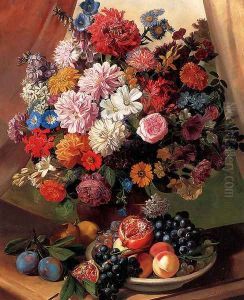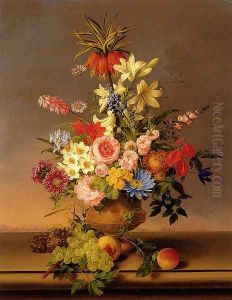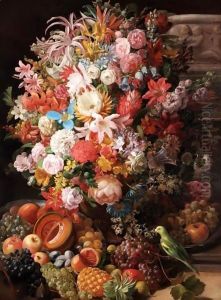Leopold van Stoll Paintings
Leopold van Stoll was a Polish-born painter who made significant contributions to the world of art in the 19th century. Born in 1808 in Krakow, Poland, Stoll's early life was steeped in the rich cultural and artistic heritage of his homeland. Despite the socio-political upheavals in Poland during his youth, Stoll's passion for art remained undeterred. He pursued his artistic education with great zeal, eventually moving to Western Europe to further his studies and career.
Stoll's artistic journey took him through various European art capitals, including Paris and Vienna, where he was exposed to the evolving art movements of his time. His work primarily focused on still life and genre painting, a testament to his keen observation skills and his ability to capture the essence of his subjects with remarkable detail and vitality. Stoll was particularly renowned for his masterful depiction of textures and surfaces, bringing everyday objects to life with his nuanced brushwork and sophisticated use of light and shadow.
Throughout his career, Leopold van Stoll exhibited his work in numerous prestigious galleries and exhibitions across Europe. His paintings were highly esteemed by collectors and art enthusiasts alike, earning him a place among the notable artists of the 19th century. Despite facing the challenges of living and working in an era of significant artistic transition, Stoll remained true to his artistic vision, blending traditional techniques with the emerging trends of his time.
Leopold van Stoll passed away in 1889, leaving behind a legacy that continues to be celebrated for its contribution to the development of still life and genre painting. His works are preserved in various art museums and private collections around the world, serving as a testament to his skill and dedication to the art form. Stoll's life and career exemplify the journey of an artist who, despite the odds, pursued his passion with unwavering commitment, enriching the world of art with his unique perspective and talent.


